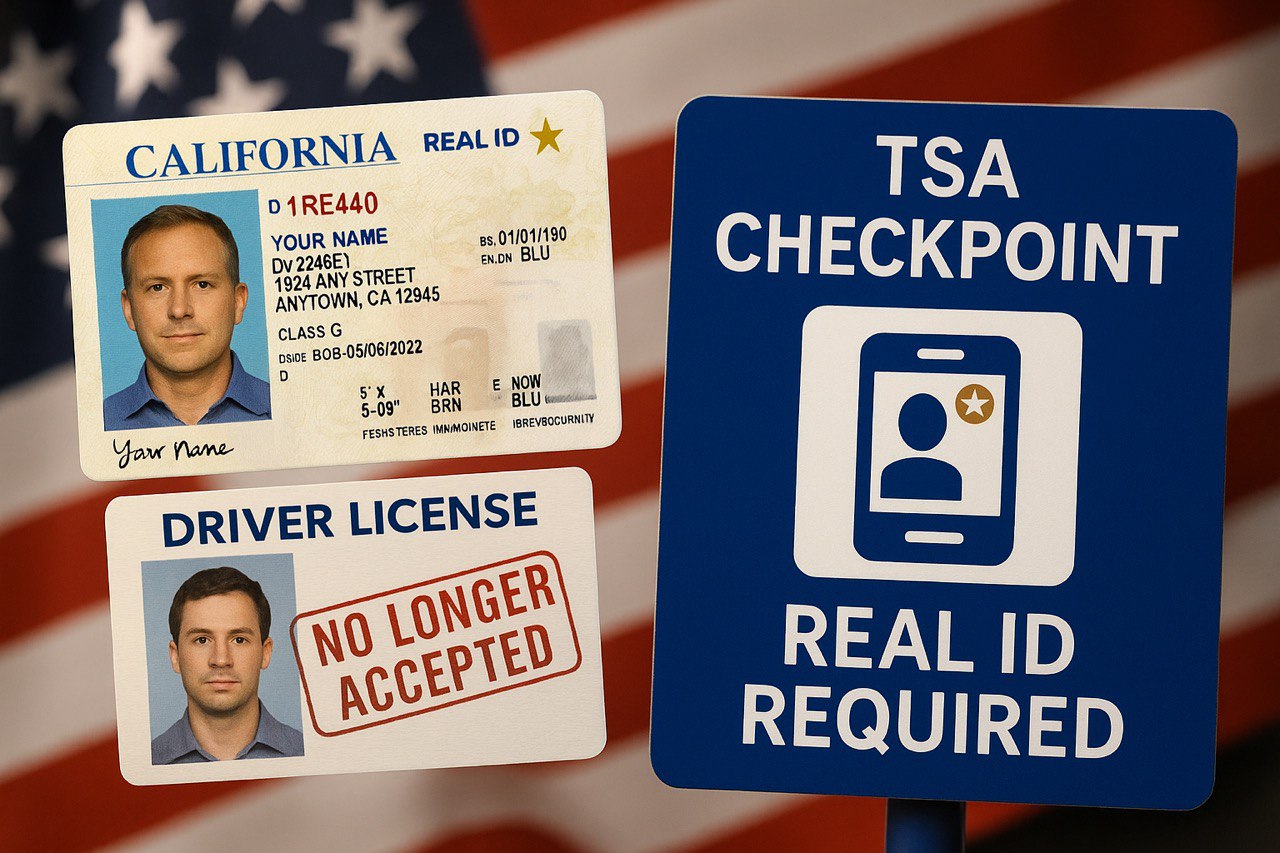REAL ID is a federally compliant state-issued identification document, marked by a gold or black star (or sometimes an American flag) in the top right corner, varying by state. It’s designed to meet minimum security standards set by the REAL ID Act of 2005, which was formulated in response to the 9/11 Commission’s recommendations to enhance national security. The Department of Homeland Security explains that this standardization ensures state-issued IDs are harder to counterfeit, improving identity verification at airports and federal facilities.
The purpose is clear: to create a consistent, secure identification system across states. For example, before REAL ID, states had varying rules for issuing driver’s licenses, creating potential security gaps. Now, every state must adhere to federal guidelines, making it easier for TSA agents to verify identities at checkpoints. This isn’t just about flying—it also applies to entering military bases or certain federal buildings, though the focus here is on air travel.
Today, May 7, 2025, marks the enforcement date, meaning travelers without a REAL ID-compliant ID will face additional screening at airport security. The New York Times notes that non-compliant IDs, often marked with “Federal limits apply,” won’t pass muster at TSA checkpoints. Alternatives include passports, military IDs, or state-issued Enhanced Driver’s Licenses (EDLs) from states like Michigan, Minnesota, New York, Vermont, and Washington (REAL ID FAQs).
The implications are significant: travelers without compliant IDs must arrive three hours early for domestic flights (instead of two), undergoing secondary verification, which could delay boarding. The TSA has warned of “phased enforcement,” but details are vague, suggesting potential inconsistencies at airports. This change, nearly 20 years in the making, is now a reality, and it’s causing concern for unprepared travelers.
How to Obtain a REAL ID: Step-by-Step Process
Getting a REAL ID requires visiting your state’s Department of Motor Vehicles (DMV) in person, as online applications aren’t an option. According to USA.gov (How to Get a REAL ID), you’ll need to provide three main categories of documents:
| Category | Examples |
| Proof of Identity | U.S. birth certificate, U.S. passport, Permanent Resident Card (for non-citizens) |
| Proof of Social Security Number | Social Security card, Form W-2, recent pay stub |
| Proof of Residency | Utility bill, bank statement, lease agreement, mortgage statement (usually two documents) |
Specific requirements vary by state, so check your state’s DMV website, like California’s (REAL ID Checklist) or Pennsylvania’s (Real ID Document Check). All documents must be original or certified copies—no photocopies are accepted. If your name has changed (e.g., due to marriage), bring proof like a marriage certificate.
The process can be time-consuming, especially with high demand. Many DMVs, like those in East Bay, California, have expanded hours due to long waits (Demand for Real ID Appointments). Some states mail new IDs, which can take up to two weeks, so plan ahead. If you’re renewing your license, you can upgrade to REAL ID for an additional fee (e.g., $30 in Pennsylvania).
Current Compliance Rates and Challenges
Despite the deadline, compliance varies widely across states. CBS News (Real ID Deadline) reports that as of April 2025, at least 17 states are less than 50% compliant, and 30 states are under 70%. Here’s a breakdown:
| Compliance Level | Details |
| <50% Compliant | 17 states, e.g., New Jersey (17%), Pennsylvania (26%), Washington (27%) |
| <70% Compliant | 30 states, meaning up to 3 in 10 travelers may face issues |
| >90% Compliant | 12 states and D.C., e.g., Colorado, Florida, Georgia (100%), Texas (98%) |
TSA checkpoint data shows about 81% of passengers currently show compliant IDs, but with many states lagging, today could see significant disruptions. Challenges include long DMV wait times, processing delays (new IDs mailed, taking up to two weeks), and potential travel delays treated as an “all hands on deck” day by TSA. Non-compliant travelers will undergo secondary verification, which is time-consuming, potentially causing bottlenecks at airports.
As someone who’s covered travel stories for years, I’ll admit—I didn’t take REAL ID seriously until last month. Planning a trip to visit my sister in California, I checked my ID and saw no star. Panic set in. I had to dig up my birth certificate (buried in a box, naturally), book a DMV appointment, and gather all the paperwork. It was a scramble, and I left the DMV less than thrilled. But now, I’m REAL ID ready, and I feel more confident about future trips. If I can do it, so can you—don’t wait until the last minute like I did.
Practical Tips for Travelers
To stay ahead, consider these steps:
- Check Your ID Now: Look for the star or flag on your driver’s license or state ID. If it’s missing, start planning.
- Use DHS Tools: The Department of Homeland Security has an interactive tool to check compliance.
- Book Early: DMV appointments are filling up fast; don’t assume walk-ins are available.
- Consider Alternatives: A passport is a federally accepted ID and skips REAL ID requirements, though it’s less convenient for frequent travelers.
Speaking of changes, technology is transforming how we do things, much like REAL ID is standardizing identification. In trading, platforms like PocketOption are making investing more accessible with user-friendly interfaces. A colleague recently mentioned PocketOptionfor its simplicity, perfect for those new to trading. If you’re curious, check it out at PocketOption—it’s like having a streamlined tool for your financial journey, similar to how REAL ID aims to streamline travel.
Conclusion
REAL ID is now a reality, and it’s crucial to be prepared. Starting today, May 7, 2025, it’s mandatory for domestic air travel, and with many states not fully compliant, delays are likely. Check your ID, gather your documents, and visit your state’s DMV if needed. Safe travels, and here’s to smoother journeys ahead!





